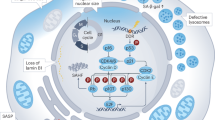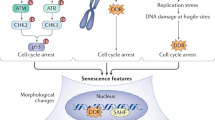Abstract
Neuroendocrine (NE)-like cells are hypothesized to contribute to the progression of prostate cancer by producing factors that enhance the growth, survival or metastatic capabilities of surrounding tumor cells. Many of the factors known to be secreted by NE-like cells, such as neurotensin (NT), parathyroid hormone-related peptide, serotonin, bombesin, etc., are agonists for G-protein-coupled receptors, but the signaling pathways activated by these agonists in prostate tumor cells are not fully defined. Identification of such pathways could provide insights into novel methods of treating late-stage disease. Using conditioned culture medium (CM) from LNCaP-derived NE-like cells (as a source of these agonists) or NT (a prototypical component of CM) to treat PC3 cells, we found that the epidermal growth factor (EGF) receptor (EGFR) was transactivated and that such activation was required for maximal PC3 cell mitogenesis, as measured by 5-bromo-2′-deoxy-uridine incorporation or cell number. NT also induced a time-dependent increase in EGFR Tyr845 phosphorylation and phosphorylation of c-Src and signal transducer and activator of transcription 5b (Stat5b) (a downstream effector of Tyr845), events that were blocked by specific inhibition of c-Src (which mediates Tyr845 phosphorylation of EGFR) or of EGFR. Introduction of mutant forms of EGFR (Tyr845) or Stat5b in PC3 cells, or treatment with selective, catalytic inhibitors of EGFR, c-Src and matrix metalloproteinases (MMPs) resulted in the loss of NT-induced stimulation of DNA synthesis, relative to wild-type controls. These data indicate that the mitogenic effect of NT on prostate cancer cells requires transactivation of the EGFR by MMPs and a novel downstream pathway involving c-Src, phosphorylation of EGFR Tyr845 and activation of Stat5b.
This is a preview of subscription content, access via your institution
Access options
Subscribe to this journal
Receive 50 print issues and online access
$259.00 per year
only $5.18 per issue
Buy this article
- Purchase on Springer Link
- Instant access to full article PDF
Prices may be subject to local taxes which are calculated during checkout









Similar content being viewed by others
References
Abrahamsson PA . (1999). Neuroendocrine differentiation in prostatic carcinoma. Prostate 39: 135–148.
Amorino GP, Parsons SJ . (2004). Neuroendocrine cells in prostate cancer. Crit Rev Eukaryot Gene Expr 14: 287–300.
Aprikian AG, Han K, Chevalier S, Bazinet M, Viallet J . (1996). Bombesin specifically induces intracellular calcium mobilization via gastrin-releasing peptide receptors in human prostate cancer cells. J Mol Endocrinol 16: 297–306.
Aprikian AG, Tremblay L, Han K, Chevalier S . (1997). Bombesin stimulates the motility of human prostate-carcinoma cells through tyrosine phosphorylation of focal adhesion kinase and of integrin-associated proteins. Int J Cancer 72: 498–504.
Biscardi JS, Maa MC, Tice DA, Cox ME, Leu TH, Parsons SJ . (1999). c-Src-mediated phosphorylation of the epidermal growth factor receptor on Tyr845 and Tyr1101 is associated with modulation of receptor function. J Biol Chem 274: 8335–8343.
Boerner JL, Biscardi JS, Silva CM, Parsons SJ . (2005). Transactivating agonists of the EGF receptor require Tyr 845 phosphorylation for induction of DNA synthesis. Mol Carcinogen 44: 262–273.
Boerner JL, Demory ML, Silva C, Parsons SJ . (2004). Phosphorylation of Y845 on the epidermal growth factor receptor mediates binding to the mitochondrial protein cytochrome c oxidase subunit II. Mol Cell Biol 24: 7059–7071.
Bologna M, Festuccia C, Muzi P, Biordi L, Ciomei M . (1989). Bombesin stimulates growth of human prostatic cancer cells in vitro. Cancer 63: 1714–1720.
Cox ME, Deeble PD, Bissonette EA, Parsons SJ . (2000). Activated 3′,5′-cyclic AMP-dependent protein kinase is sufficient to induce neuroendocrine-like differentiation of the LNCaP prostate tumor cell line. J Biol Chem 275: 13812–13818.
Cox ME, Deeble PD, Lakhani S, Parsons SJ . (1999). Acquisition of neuroendocrine characteristics by prostate tumor cells is reversible: implications for prostate cancer progression. Cancer Res 59: 3821–3830.
Dal Farra C, Sarret P, Navarro V, Botto JM, Mazella J, Vincent JP . (2001). Involvement of the neurotensin receptor subtype NTR3 in the growth effect of neurotensin on cancer cell lines. Int J Cancer 92: 503–509.
Daub H, Wallasch C, Lankenau A, Herrlich A, Ullrich A . (1997). Signal characteristics of G protein-transactivated EGF receptor. EMBO J 16: 7032–7044.
Daub H, Weiss FU, Wallasch C, Ullrich A . (1996). Role of transactivation of the EGF receptor in signalling by G-protein-coupled receptors. Nature 379: 557–560.
Deeble PD, Murphy DJ, Parsons SJ, Cox ME . (2001). Interleukin-6- and cyclic AMP-mediated signaling potentiates neuroendocrine differentiation of LNCaP prostate tumor cells. Mol Cell Biol 21: 8471–8482.
di Sant'Agnese PA . (1992). Neuroendocrine differentiation in carcinoma of the prostate. Diagnostic, prognostic, and therapeutic implications. Cancer 70 (Suppl): 254–268.
Gully D, Canton M, Boigegrain R, Jeanjean F, Molimard JC, Poncelet M et al. (1993). Biochemical and pharmacological profile of a potent and selective nonpeptide antagonist of the neurotensin receptor. Proc Natl Acad Sci USA 90: 65–69.
Hassan S, Carraway RE . (2006). Involvement of arachidonic acid metabolism and EGF receptor in neurotensin-induced prostate cancer PC3 cell growth. Regul Peptides 133: 105–114.
Hassan S, Dobner PR, Carraway RE . (2004). Involvement of MAP-kinase, PI3-kinase and EGF-receptor in the stimulatory effect of neurotensin on DNA synthesis in PC3 cells. Regul Peptides 120: 155–166.
Iwamura M, Abrahamsson PA, Foss KA, Wu G, Cockett AT, Deftos LJ . (1994). Parathyroid hormone-related protein: a potential autocrine growth regulator in human prostate cancer cell lines. Urology 43: 675–679.
Jongsma J, Oomen MH, Noordzij MA, Romijn JC, Der Kwast TH, Schroder FH et al. (2000). Androgen-independent growth is induced by neuropeptides in human prostate cancer cell lines. Prostate 42: 34–44.
Kloth MT, Catling AD, Silva CM . (2002). Novel activation of STAT5b in response to epidermal growth factor. J Biol Chem 277: 8693–8701.
Kloth MT, Laughlin KK, Biscardi JS, Boerner JL, Parsons SJ, Silva CM . (2003). STAT5b, a mediator of synergism between c-Src and the epidermal growth factor receptor. J Biol Chem 278: 1671–1679.
Labbe-Jullie C, Barroso S, Nicolas-Eteve D, Reversat JL, Botto JM, Mazella J et al. (1998). Mutagenesis and modeling of the neurotensin receptor NTR1. Identification of residues that are critical for binding SR 48692, a nonpeptide neurotensin antagonist. J Biol Chem 273: 16351–16357.
Larran LJ, Aparicio PJ, Lopez MA, Vilches TJ . (2000). Effect of the neuropeptides bombesin and calcitonin on the growth of prostate cell lines, PC-3, DU 145, and LNCaP. Acta Urol Esp 24: 779–784.
Lee LF, Guan J, Qiu Y, Kung HJ . (2001). Neuropeptide-induced androgen independence in prostate cancer cells: roles of nonreceptor tyrosine kinases Etk/Bmx, Src, and focal adhesion kinase. Mol Cell Biol 21: 8385–8397.
Levitzki A, Gazit A . (1995). Tyrosine kinase inhibition: an approach to drug development. Science 267: 1782–1788.
Luttrell LM, la Rocca GJ, van BT, Luttrell DK, Lefkowitz RJ . (1997). Gbetagamma subunits mediate Src-dependent phosphorylation of the epidermal growth factor receptor. A scaffold for G protein-coupled receptor-mediated Ras activation. J Biol Chem 272: 4637–4644.
Ma YC, Huang J, Ali S, Lowry W, Huang XY . (2000). Src tyrosine kinase is a novel direct effector of G proteins. Cell 102: 635–646.
Madarame J, Higashiyama S, Kiyota H, Madachi A, Toki F, Shimomura T et al. (2003). Transactivation of epidermal growth factor receptor after heparin-binding epidermal growth factor-like growth factor shedding in the migration of prostate cancer cells promoted by bombesin. Prostate 57: 187–195.
Moriggl R, Gouilleux-Gruart V, Jahne R, Berchtold S, Gartmann C, Liu X et al. (1996). Deletion of the carboxyl-terminal transactivation domain of MGF-Stat5 results in sustained DNA binding and a dominant negative phenotype. Mol Cell Biol 16: 5691–5700.
Orellana SA, McKnight GS . (1992). Mutations in the catalytic subunit of cAMP-dependent protein kinase result in unregulated biological activity. Proc Natl Acad Sci USA 89: 4726–4730.
Petit T, Davidson KK, Lawrence RA, von Hoff DD, Izbicka E . (2001). Neuropeptide receptor status in human tumor cell lines. Anticancer Drugs 12: 133–136.
Prenzel N, Zwick E, Daub H, Leserer M, Abraham R, Wallasch C et al. (1999). EGF receptor transactivation by G-protein-coupled receptors requires metalloproteinase cleavage of proHB-EGF. Nature 402: 884–888.
Qiu Y, Robinson D, Pretlow TG, Kung HJ . (1998). Etk/Bmx, a tyrosine kinase with a pleckstrin-homology domain, is an effector of phosphatidylinositol 3′-kinase and is involved in interleukin 6-induced neuroendocrine differentiation of prostate cancer cells. Proc Natl Acad Sci USA 95: 3644–3649.
Reile H, Armatis PE, Schally AV . (1994). Characterization of high-affinity receptors for bombesin/gastrin releasing peptide on the human prostate cancer cell lines PC-3 and DU-145: internalization of receptor bound 125I-(Tyr4) bombesin by tumor cells. Prostate 25: 29–38.
Santiskulvong C, Rozengurt E . (2003). Galardin (GM 6001), a broad-spectrum matrix metalloproteinase inhibitor, blocks bombesin- and LPA-induced EGF receptor transactivation and DNA synthesis in rat-1 cells. Exp Cell Res 290: 437–446.
Schindler C, Darnell Jr JE . (1995). Transcriptional responses to polypeptide ligands: the JAK-STAT pathway. Annu Rev Biochem 64: 621–651.
Seethalakshmi L, Mitra SP, Dobner PR, Menon M, Carraway RE . (1997). Neurotensin receptor expression in prostate cancer cell line and growth effect of NT at physiological concentrations. Prostate 31: 183–192.
Sehgal I, Powers S, Huntley B, Powis G, Pittelkow M, Maihle NJ . (1994). Neurotensin is an autocrine trophic factor stimulated by androgen withdrawal in human prostate cancer. Proc Natl Acad Sci USA 91: 4673–4677.
Tice DA, Biscardi JS, Nickles AL, Parsons SJ . (1999). Mechanism of biological synergy between cellular Src and epidermal growth factor receptor. Proc Natl Acad Sci USA 96: 1415–1420.
Tovar-Sepulveda V, Falzon M . (2002). Parathyroid hormone-related protein enhances PC-3 prostate cancer cell growth via both autocrine/paracrine and intracrine pathways. Regul Peptides 105: 109–120.
Wright JD, Reuter CW, Weber MJ . (1996). Identification of sites on epidermal growth factor receptors which are phosphorylated by pp60src in vitro. Biochim Biophys Acta 1312: 85–93.
Xiao D, Qu X, Weber HC . (2002). GRP receptor-mediated immediate early gene expression and transcription factor Elk-1 activation in prostate cancer cells. Regul Peptides 109: 141–148.
Xiao D, Qu X, Weber HC . (2003). Activation of extracellular signal-regulated kinase mediates bombesin-induced mitogenic responses in prostate cancer cells. Cell Signal 15: 945–953.
Yano S, Macleod RJ, Chattopadhyay N, Tfelt-Hansen J, Kifor O, Butters RR et al. (2004). Calcium-sensing receptor activation stimulates parathyroid hormone-related protein secretion in prostate cancer cells: role of epidermal growth factor receptor transactivation. Bone 35: 664–672.
Zhao D, Zhan Y, Koon HW, Zeng H, Keates S, Moyer MP et al. (2004). Metalloproteinase-dependent transforming growth factor-alpha release mediates neurotensin-stimulated MAP kinase activation in human colonic epithelial cells. J Biol Chem 279: 43547–43554.
Acknowledgements
We thank Michael Solga for providing expertise in flow cytometry, Eli Casarez for technical assistance, Cliff Martin for assistance in manuscript preparation, Dr Corinne Silva for reviewing this manuscript, the members of the SJ Parsons and CM Silva laboratories for their thoughtful input and Sanofi-Aventis (Malvern, PA, USA) for generously providing the SR48692 inhibitor. This work was supported by the NIH grants RO1 CA71449 (SJP) and T32 DK007646 (GPA).
Author information
Authors and Affiliations
Corresponding author
Rights and permissions
About this article
Cite this article
Amorino, G., Deeble, P. & Parsons, S. Neurotensin stimulates mitogenesis of prostate cancer cells through a novel c-Src/Stat5b pathway. Oncogene 26, 745–756 (2007). https://doi.org/10.1038/sj.onc.1209814
Received:
Revised:
Accepted:
Published:
Issue Date:
DOI: https://doi.org/10.1038/sj.onc.1209814
Keywords
This article is cited by
-
Neuropeptide Y and its receptors in prostate cancer: associations with cancer invasiveness and perineural spread
Journal of Cancer Research and Clinical Oncology (2023)
-
The role of Neurotensin and its receptors in non-gastrointestinal cancers: a review
Cell Communication and Signaling (2020)
-
Agonist-induced activation of human FFA1 receptor signals to extracellular signal-regulated kinase 1 and 2 through Gq- and Gi-coupled signaling cascades
Cellular & Molecular Biology Letters (2017)
-
Neurotensin promotes the progression of malignant glioma through NTSR1 and impacts the prognosis of glioma patients
Molecular Cancer (2015)
-
The significance of NTR1 expression and its correlation with β-catenin and EGFR in gastric cancer
Diagnostic Pathology (2015)



